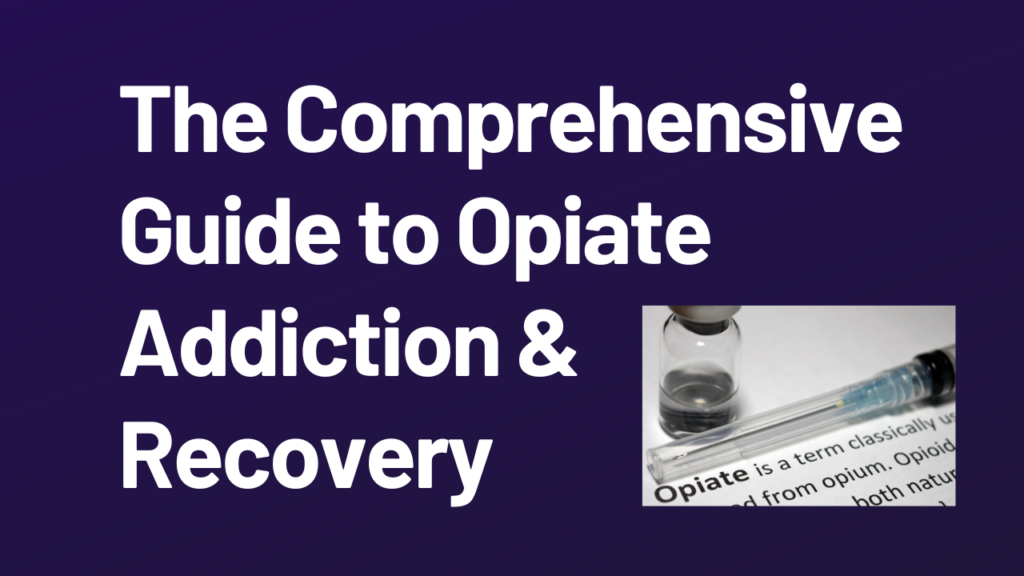
The Comprehensive Guide to Opiate Addiction & Recovery covers every aspect of opiate addiction, from the problem to the solution of the recovery process. We will discuss what opiate addiction is, how opiates affect the brain with SPECT scans, what is fentanyl and rainbow fentanyl, what is opiate withdrawal, what is addiction and the recovery process, and what is the difference between inpatient and outpatient treatment for addiction. We will also discuss the importance of seeking professional help and the importance of having family and friends around you for support during recovery. Opiate addiction is a serious and life-threatening condition that can have devastating consequences. Therefore, it is essential to understand the risks associated with opiate use, the signs and symptoms of opiate addiction, the treatment options available, and the importance of support during recovery.
In this comprehensive guide to opioid addiction and recovery we will answer the following questions:
- What is Opiate Addiction?
- How Opiates effect the Brain with SPECT SCANS?
- What is Fentanyl and Rainbow Fentanyl?
- What is Opiate Withdrawal?
- What is Addiction & the Recovery Process?
- What is the difference between Inpatient & Outpatient Treatment for Addiction?
If you are someone you know is struggling with an opiate addiction, this comprehensive guide is for you. After completing this guide, you will have a deeper understanding of opiate addiction, the seriousness medical risks of opiates, especially fentanyl (The Problem), and learn about opiate withdrawal, the recovery process and the different treatment options (The Solution).
Let’s Get Started!
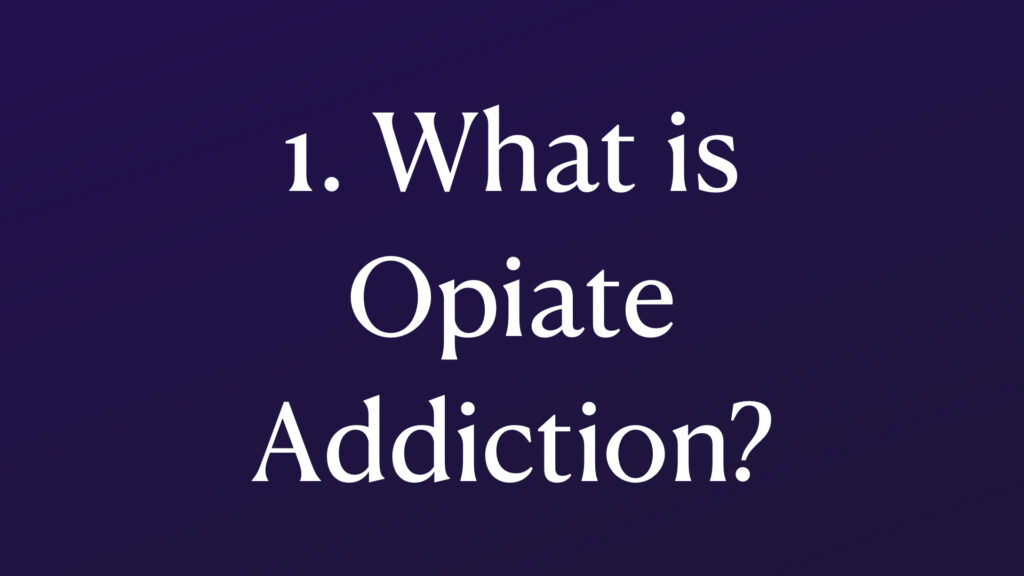
What is Opiate Addiction?
Opiates, also known as opioids, are a class of drugs that interact with the body’s opioid receptors. Commonly prescribed for pain relief, opiates include heroin, morphine, codeine and oxycodone. Opiate addiction is a serious condition that can be both physically and psychologically damaging. It is characterized by compulsive drug seeking and use, despite the negative consequences associated with it. People who suffer from opiate addiction may experience withdrawal symptoms, including nausea, sweating, anxiety and muscle pain, when not taking the drug.The different types of opiates available today
- Morphine
- Codeine
- Hydrocodone
- Oxycodone
- Hydromorphone
- Fentanyl
- Methadone
- Buprenorphine
- Buprenorphine/naloxone
- Naltrexone
Some common Signs & Symptoms of Opiate Addiction are:
- Changes in sleep patterns, such as sleeping more or less than usual
- Unusual energy levels, either lethargy or hyperactivity
- Changes in appetite, either increased or decreased
- Mood swings, such as sudden bouts of depression or anxiety
- Loss of interest in activities or hobbies once enjoyed
- Changes in behavior, such as increased secrecy or lying
- Neglecting responsibilities at home, work or school
- Financial problems due to spending money on drugs
- Changes in physical appearance, such as weight loss, pale skin, and dark circles under the eyes
- Intense cravings for opiates
Great Information on Opioids from the National Institute for Drug Abuse can be found Here.
How is opiate addiction different from other addictions? Opiates are a type of drug derived from the poppy plant. They are highly addictive, and the withdrawal symptoms can be more severe than those of other addictions. Opiate addiction is characterized by compulsive drug-seeking behavior and an inability to stop using despite harmful consequences. Opiate addiction also increases the risk of overdose and death due to its potency and the potential for tolerance and dependence to develop. Opiate addiction can also have long-term effects on physical and mental health, such as increased risk of respiratory depression, constipation, and depression.
The disturbing trend is that Opioid Drug Overdoses have dramatically increased over time in the United State as see in the graph.
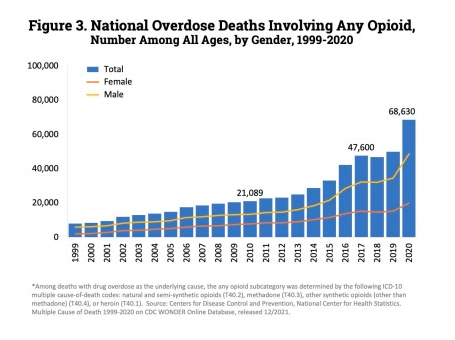
As you can see, the increase of 21,089 opioid overdoses in 2010 has increased to 68,630 in 2020, which is an increase in triple the amount of opioid overdose deaths. This qualifies it as a growing epidemic.
Here is an excellent educational video on Opiate Addiction Explained
Now that we learned What is an Opiate addiction, let’s look at the new technology called SPECT Scans which a type of medical imaging that gives you a clear picture of the brain. This imaging will answer the 2nd question How Opiates affect the Brain with Spect Scans?
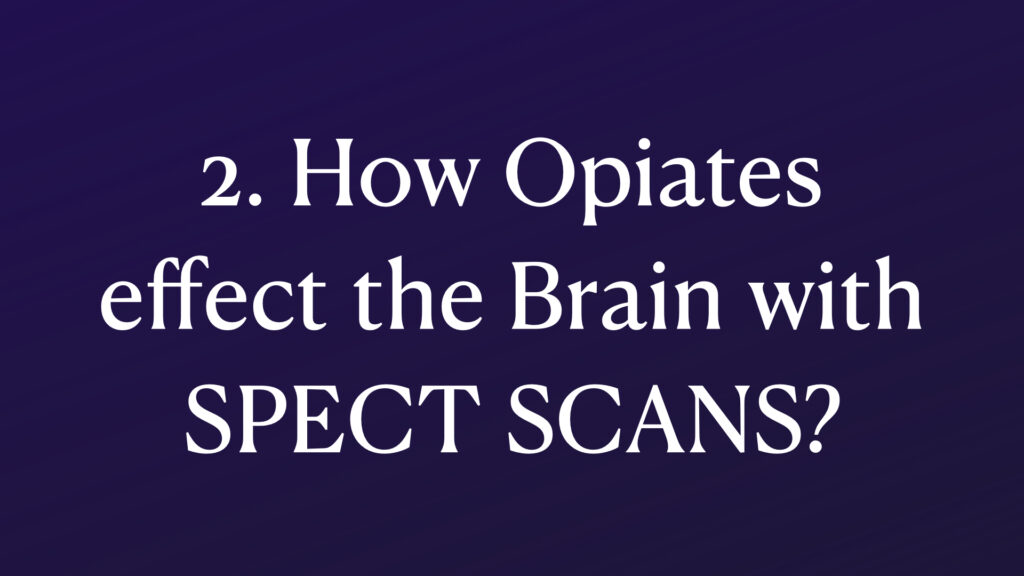
Spect Scan (Single Photon Emission Computed Tomography) is a brain imaging technique used to measure biochemical activity in the brain. It is a non-invasive imaging technique that uses gamma rays emitted by a radioactive isotope to measure the chemical activity of different organs in the body. It is used to diagnose neurological conditions such as stroke, Alzheimer’s disease, Parkinson’s disease, and other neurological disorders. We have been able to use Spect Scans to validate the damaged caused by drug abuse, and we will evaluate the impact of opiates on the brain. These images are courtesy of the Amen Clinic, led by Daniel Amen, MD.

Here is a Spect Scan of a Healthy Brain. There is a lot of color, activity and blood flow to this brain, and is functioning at a high level. The brighter colors indicate healthy brain activity.
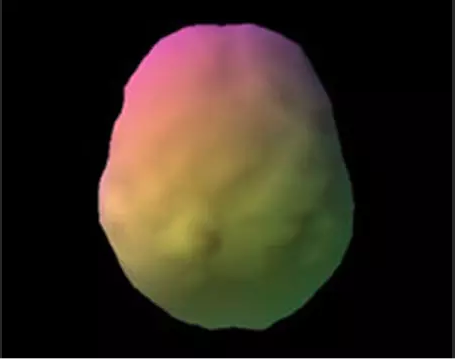
Here is the Spect Scan of a 39 year old who has been using heroin frequently for 25 years. Notice the damage to the brain. Compare this image to the healthy brain. You can clearly see the areas of inactivity in the brain. All the holes in the brain are areas of damage and inactivity. As you can see, the regular use of heroin is devastating to the functioning of the brain.
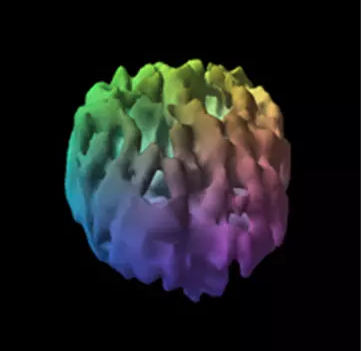
Here is another Spect Scan. This a a 40 year old with 7 years on methadone and heroin for 10 years prior. Note the overall decrease in brain activity. The holes and dark places in the image are the areas of inactivity. Again, we see the devastating effect on the regular use and abuse of opiates on the brain.
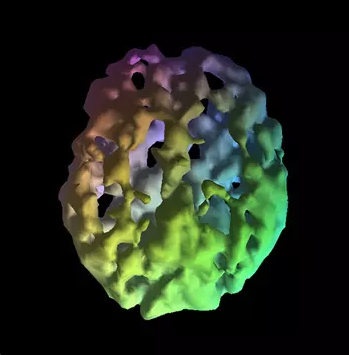
What are the effects of opiate addiction on the brain? Opiate addiction has a wide range of effects on the brain. It can cause changes in the brain’s reward system, resulting in cravings and difficulty feeling pleasure from anything other than opiates. It can also lead to changes in areas of the brain related to decision making and impulse control, increasing the risk of relapse. Opiate addiction can also cause changes in the brain’s chemistry, leading to anxiety, depression, and increased pain sensitivity. Long-term opiate use can cause permanent damage to the brain and lead to cognitive deficits.
Opiates are not the only drug that negatively impacts brain functioning. Here is a video that shows the impact of many different drugs, including opiates, on the brain.
Now that we know through SPECT scans that the abuse of opiates are devastating to the brain, let’s take a closer look at the newer opiate that is an epidemic on US streets today, causing an alarming amount of overdose deaths. This opiate is called Fentanyl. We are going to answer the question, What is Fentanyl and Rainbow Fentanyl?
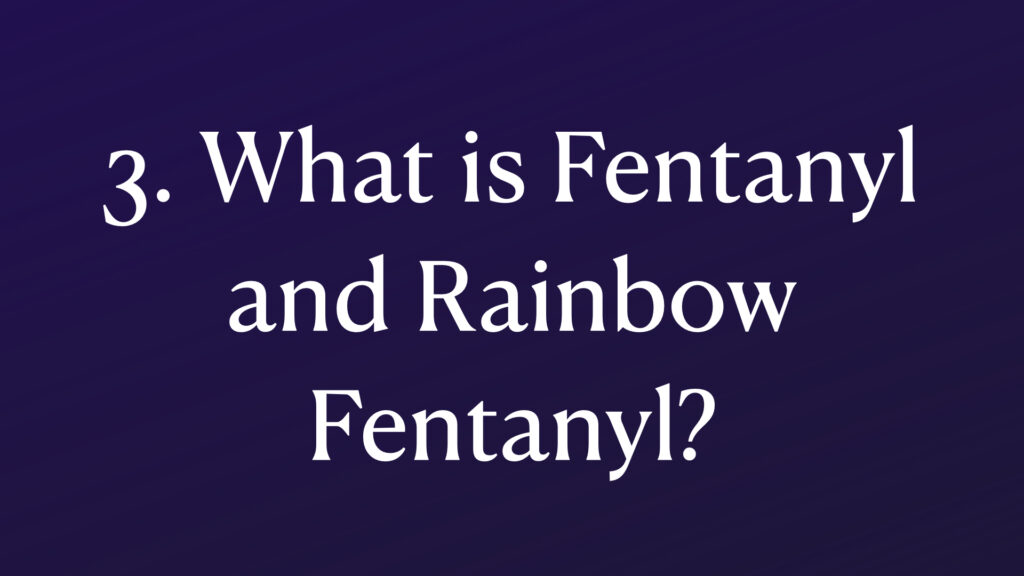
Fentanyl is a highly potent synthetic opioid pain reliever. It is many times more powerful than other opioids such as morphine and heroin, and is often prescribed to manage severe pain, such as that associated with terminal illness or following surgery. Fentanyl is also used illegally as a recreational drug, often in combination with other drugs, and has been linked to a growing number of overdose death. Fentanyl is an extremely powerful synthetic opioid that is up to 100 times stronger than morphine. It is dangerous because it can cause a fatal overdose even in very small doses. It is also easily abused because it can be taken orally, snorted, or injected, and its effects are felt very quickly. Fentanyl can also be mixed with other drugs, such as heroin, without the user’s knowledge, making it much more dangerous.
According to the Centers for Disease Control and Prevention (CDC), there were over 31,000 deaths in the United States in 2019 that were attributed to synthetic opioids (including Fentanyl), with Fentanyl being the most commonly detected drug. This is a 12% increase from 2018 and is the highest number of deaths recorded from any drug overdose in a single year. In 2021, more than 71,000 people died from synthetic opioid-related drug overdose in the United States according to provisional data from the Centers for Disease Control and Prevention (CDC). Again, the majority of these deaths were connected to Fentanyl. Recent data suggest that number continues to increase each year.
Fentanyl is trafficked into the United States from foreign countries, typically from Mexico and China. The drug is often smuggled across the border in packages or hidden inside other items, such as clothing or electronics. It can also be sent through the mail or shipped via freight services. Additionally, fentanyl is trafficked within the United States by drug cartels and other criminal organizations. In the United States, there is a great need to address the massive amounts of Fentanyl crossing the Mexican / US border.
The DEA has a good fact sheet about Fentanyl that can be found here.
Rainbow fentanyl is the name given to a mixture of fentanyl, a synthetic opioid, and food dye in assorted colors. Rainbow fentanyl is particularly dangerous because it is often sold as a counterfeit version of prescription pills, and users may not be aware that they are taking a powerful opioid. It can also be made in a variety of strengths, making it difficult to know how much of the drug is ingested. It is disguised to look like candy, and it can be easily attractive to younger people, and puts our younger generation at risks for opiate overdose.
We have explored what is Fentanyl and the dangerous new production of the drug called Rainbow Fentanyl. Now we are transitioning to the process of recovery, which begins with opiate withdrawal. Unlike other drugs, opiate withdrawals is different, so we are going to take a closer look at answering the question, “What is Opiate Withdrawal?”
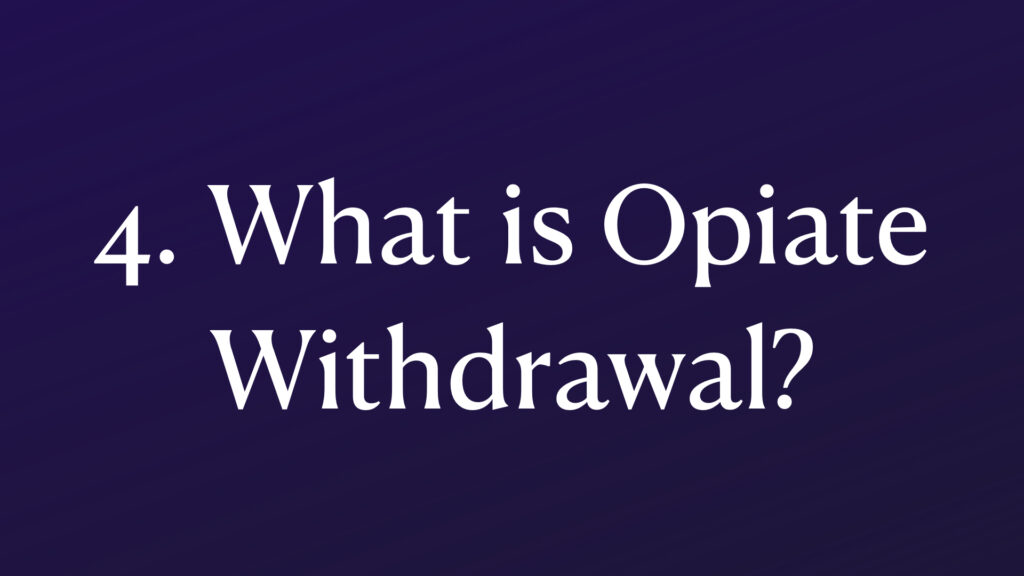
Opiate withdrawal is a set of symptoms that occur when a person stops using opiates, such as heroin or prescription painkillers, after a period of prolonged use. Symptoms can include:
- nausea
- vomiting
- muscle aches
- sweating
- insomnia
- agitation
- anxiety
- depression
More severe symptoms can include:
- cramping
- diarrhea
- involuntary movements
Opiate withdrawal can last anywhere from a few days to several weeks, depending on the severity of the addiction. The duration and intensity of opiate withdrawal symptoms varies from person to person, but in general, the acute physical symptoms of opiate withdrawal can last up to a week, while the psychological symptoms can last for several weeks or longer. Treatment options may include medications to reduce the severity of the withdrawal symptoms, counseling, and other forms of support.

Opiates are highly addictive and can be difficult to quit. The body can become physically dependent on opiates, leading to withdrawal symptoms when trying to quit, which can be very uncomfortable and sometimes even dangerous. People also become psychologically dependent on opiates, causing cravings that can be hard to resist. Withdrawal can also be emotionally difficult as cravings and other symptoms can interfere with daily life. Many people require professional medical help and support to help them safely quit opiates.
After you go through a successful detox from opiates the real work begins, the Recovery Process. What do you recover? You recover all the aspects you lost through the addiction, your family, friends, health, finances, spirituality and yourself, your true self. We will walk you though the Recovery process by answering the question, “What is Addiction & the Recovery Process?”
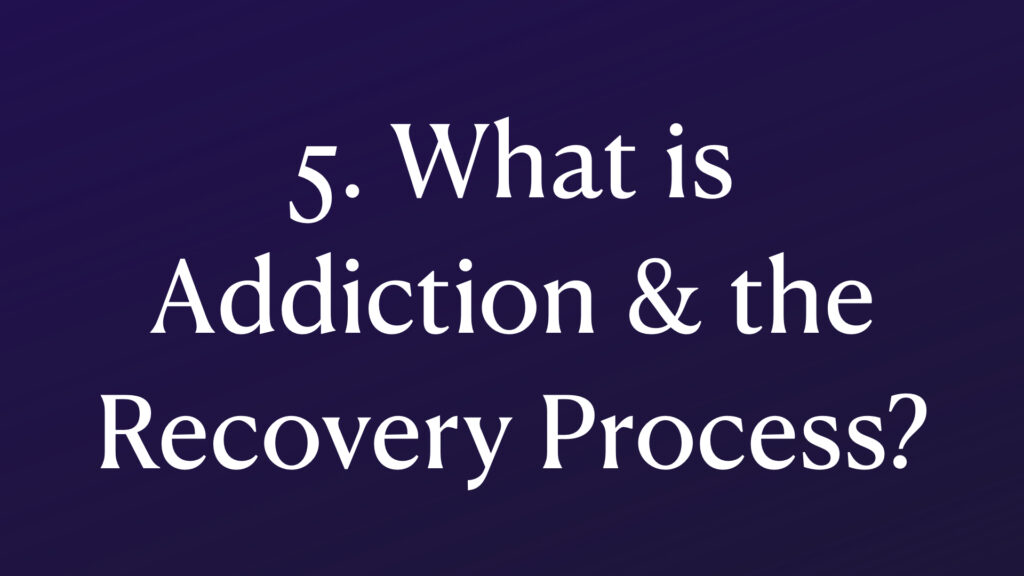
The Recovery Process begins with a willingness to get some help. Family and friends must be committed to helping the suffering addict to get better, but not help them to get worst, which we call enabling. Most people suffering with addiction are resistant to receiving help, and often become open to The Recovery Process when the losses associated with the addiction begin to increase to an unbearable level.
The Recovery Process from addiction includes:
- Acknowledging the addiction and taking responsibility for it.
- Reaching out for help from family, friends, and professionals.
- Participating in a treatment program, such as counseling, therapy, and/or a 12-step program.
- Developing a support network of other recovering individuals.
- Practicing self-care and self-compassion.
- Learning coping skills to manage cravings and triggers.
- Focusing on long-term recovery. 8. Finding meaning and purpose in life.
The Recovery Process has many different dimensions and each level needs to be addressed in order to have a full recovery. These levels are:
- Physical – the body, especially the brain needs to be repaired through a healthy combination of abstinence from the drug, nutrition and exercise.
- Psychological – the psychological distortions, or unhealthy thinking needs to be challenged, and corrected to truth.
- Emotional – this requires learning to manage their emotions in a healthy way without the use of the addiction. Healthy emotional management and learning to effetely express emotions is very important.
- Spiritual – developing a life giving spiritual connection and vision is a key component to successful freedom from addiction. The 12 Step Program, Celebration Recovery or a good religious organization can be the difference between full recovery and relapse.
Below is a Masterclass on Addiction and Recovery, which explains the different stages of the Recovery Process.
One of the best models for The Recovery Process is in the Book A Roadmap to the Soul. It is a process called The Voices Within. The basics of the powerful recovery is dividing the personality into 3 parts:
- The True Self – the authentic self that loves and wants to be loved, which carries your purpose and is connected spiritually to God.
- The Protector – the coping behaviors or defense mechanism that evolves into the Addiction part of the personality. When addiction is active, this voice takes over.
- The Wounded Child – the place inside that carries the emotional pain about life. This part is internalized pain, when unresolved, because the fuel for any addiction.
A Roadmap to the Soul is a process to empower the True Self, contain the addiction or Protector and resolve or heal old wounds or the Wounded Child. Here is a video that explains this Recovery Process at greater depth.
Now that you understand What is Addiction and the Recovery Process, the next thought is “What do we do now?” We are often asked the question, “Should we choose Outpatient Treatment for addiction or Inpatient Treatment?” This is a great question, and in this next section we will answer this question for you. We will educate you on the difference, and help you make an informed, educated decision. This next section will answer, “What is the difference between Inpatient & Outpatient Treatment for Addiction?”

Intensive inpatient treatment for addiction is a form of treatment that requires patients to remain in a residential facility for a period of time, usually around 30 days. It is highly structured and involves individual, group, and family therapy, as well as medical and psychiatric care. The program is designed to address the underlying causes of addiction, equip individuals with the skills needed to stay sober, and help them develop a strong recovery plan. It may also include holistic therapies such as yoga, art, or music therapy.

Intensive Outpatient Treatment (IOP) for addiction is a short-term treatment program that provides individuals with the opportunity to receive intensive therapeutic treatment while still living at home or in a supportive living environment. It is an intermediate level of care that is more intensive than traditional outpatient therapy, but less intensive than residential treatment. IOP typically involves group therapy, individual therapy, and other therapeutic activities such as family counseling, relapse prevention planning, life skills training, job readiness and social skills training. The primary goal of IOP is to help individuals achieve and maintain sobriety by providing the necessary tools, resources, and support to successfully live in their community. Intensive Outpatient Treatment is usually 3-5 evenings a week, for 3 hours a day. The intensive part of the program usually last 6-8 weeks, with an additional year of aftercare. Aftercare usually meets one evening a week for a couple of hours.
Thank you for reading this blog post on The Comprehensive Guide to Opiate Addiction & Recovery. We hope that your received great value from this comprehensive guide. If you would like to view the longer YouTube version of this post on video please see the video below. Until next time, we hope that you or your loved one experiences that liberating freedom from addiction that comes through The Recovery Process!
